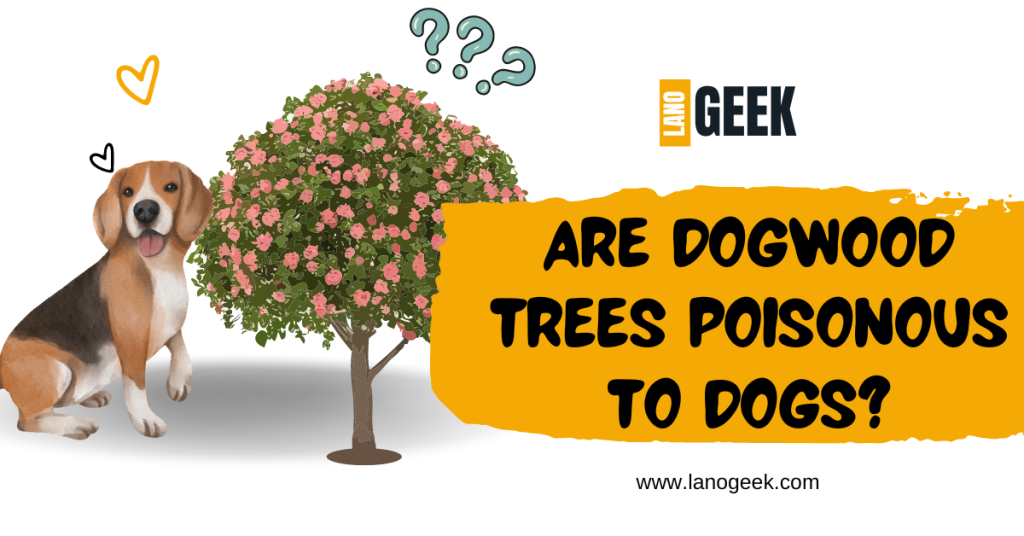As pet owners, ensuring the safety and well-being of our furry friends is paramount. From exploring the potential risks of dogwood berries to uncovering common toxic plants every dog owner should be aware of, we provide expert insights and practical advice to help you navigate the complexities of pet care. Our mission is to empower dog owners with the knowledge they need to protect their canine companions from harm while fostering a deeper understanding of their unique needs. Lets embark on this journey to create a safer, healthier environment for our beloved four-legged family members.
Proof Read: Can Dog Eat Goji Berry
Toxic Plants
Understanding which plants pose a threat to your dog’s health is essential for creating a safe environment.
Azalea, Rhododendron, Rosebay: These flowering plants contain toxins that can cause serious harm to dogs if ingested. Symptoms of toxicity include gastrointestinal upset, drooling, and in severe cases, cardiac abnormalities. Pet owners should refrain from planting these varieties in areas accessible to their dogs.
Lilies: While admired for their beauty, certain species of lilies, such as Easter lilies and Tiger lilies, are highly toxic to cats and can also pose a threat to dogs. Ingestion of even small amounts of these plants can lead to kidney failure and, in some cases, prove fatal.
Aloe: Despite its medicinal properties for humans, aloe vera can be toxic to dogs if ingested in large quantities. Symptoms of aloe poisoning in dogs may include vomiting, diarrhea, and changes in urine color. Pet owners should exercise caution when using aloe products in their homes.
Strategies
Protecting your dog from potential hazards in the environment requires proactive measures.
Physical Barriers: Erecting barriers around toxic plants can prevent dogs from accessing them. This may include fencing off garden areas or using plant covers to restrict access to specific plants known to be harmful.
Training and Supervision: Teaching dogs to avoid certain plants through training techniques such as “leave it” commands can help deter them from ingesting toxic foliage. Additionally, supervising outdoor activities allows pet owners to intervene if their dog shows interest in potentially harmful plants.
Plant Selection: Opting for pet-safe plants in your garden can minimize the risk of toxicity. Researching plant varieties that are non-toxic to dogs and replacing toxic plants with safer alternatives can create a safer outdoor environment for your furry friend.
Regular Monitoring: Routinely inspecting your yard for any new or potentially toxic plants that may have sprouted can help identify and address potential hazards promptly. Prompt removal of toxic plants reduces the risk of accidental ingestion by curious pets.
Risks Of Dogwood Berries
Toxicity Levels: While dogwood berries are generally considered non-toxic, certain varieties may pose a risk if consumed in large quantities. Understanding the levels of toxicity and how they may vary among different dogwood species is crucial for pet owners.
Gastrointestinal Distress: Excessive consumption of dogwood berries can lead to gastrointestinal upset in dogs. Symptoms may include vomiting, diarrhea, and abdominal discomfort. Recognizing these signs and knowing when to seek veterinary care is essential for prompt treatment.
Preventive Measures: To mitigate the risk of berry ingestion, pet owners can take proactive measures such as removing fallen berries from the yard, training dogs to avoid eating unfamiliar plants, and supervising outdoor activities to prevent unsupervised foraging.
Veterinary Care
Knowing when to seek veterinary care is crucial in the event of a suspected plant-related toxicity incident.
Recognizing Symptoms: Familiarize yourself with the common symptoms of plant toxicity in dogs, such as vomiting, diarrhea, lethargy, drooling, and difficulty breathing. If your dog exhibits any unusual symptoms after being exposed to plants, don’t hesitate to seek veterinary attention.
Contacting Your Veterinarian: If you suspect your dog has ingested a toxic plant, contact your veterinarian immediately. Provide them with details such as the type of plant ingested, the quantity consumed, and any observed symptoms. Your veterinarian can provide guidance on the next steps, including whether to induce vomiting or seek emergency treatment.
Follow-Up Care: After initial treatment, follow any instructions provided by your veterinarian for monitoring your dog’s condition at home. Attend follow-up appointments as recommended to ensure your dog fully recovers from the toxicity incident.
Emergency Treatment: In severe cases of plant toxicity, prompt emergency treatment may be necessary. This may involve administering activated charcoal to absorb toxins, intravenous fluids to flush out toxins, or other supportive care measures to stabilize your dog’s condition.
Conclusion
In conclusion, safeguarding your dog from plant-related hazards requires a combination of awareness, preventive measures, and prompt action. Recognizing the potential dangers posed by common toxic plants, such as dogwood berries, azaleas, lilies, and aloe vera, empowers pet owners to take proactive steps to prevent exposure. Effective strategies for minimizing the risk of plant-related toxicity incidents include erecting physical barriers, training dogs to avoid harmful plants, selecting pet-safe vegetation, and regularly monitoring the environment. Additionally, knowing the signs of plant toxicity and promptly seeking veterinary attention if ingestion occurs are critical steps in ensuring the best possible outcome for your dog’s health and well-being.






